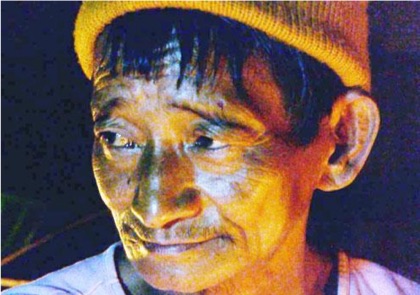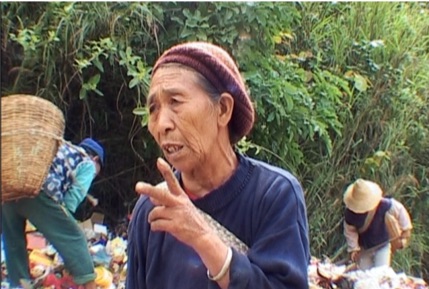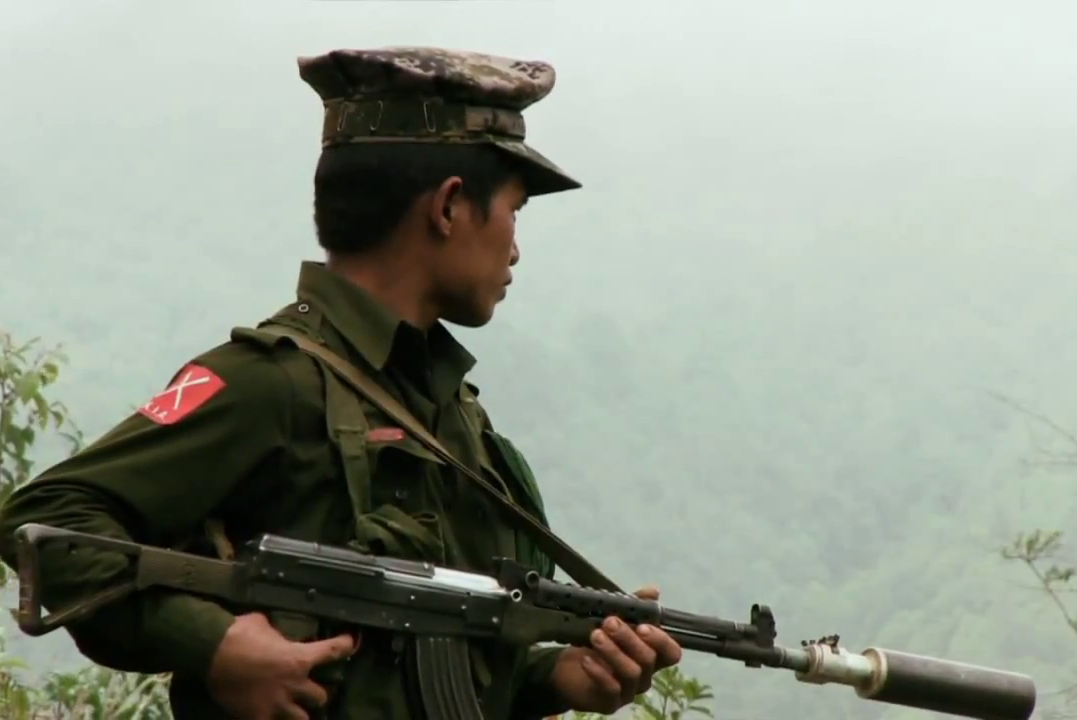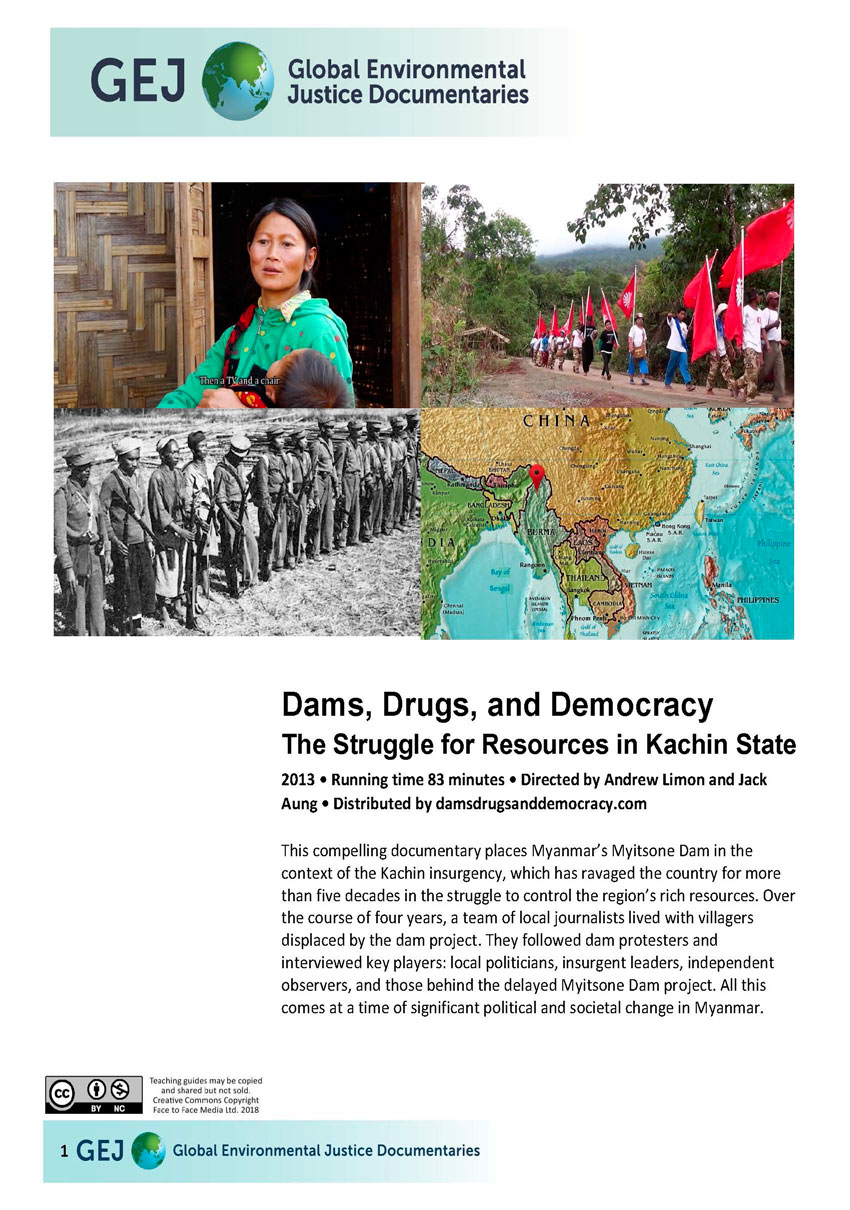Curator
 — Jason A.Carbine, Associate Professor of Religious Studies, Whittier College
— Jason A.Carbine, Associate Professor of Religious Studies, Whittier College
Dams, Drugs and Democracy
This compelling documentary places Myanmar's Myitsone Dam in the context of the Kachin insurgency which has ravaged the country for more than five decades in the struggle for control the region’s rich resources.

Curator
This film was selected by Jason A. Carbine C. Milo Connick Chair of Religious Studies Associate Professor Department of Religious Studies, Whittier College.
Why I chose this film
I selected this film because it shows the interrelations between religion and many other facets of global development: hydropower projects, resource extraction, population displacement, drug addiction, war, venture capital efforts, military rule, and democracy, as well as Myanmar’s foreign relations, especially with China. I am struck by how well the documentary integrates all these themes.
Teacher's guide
Please see the teacher's guide for maps, background information and suggested subjects, questions and activities.
Synopsis
This compelling documentary places Myanmar's Myitsone Dam in the context of the Kachin insurgency which has ravaged the country for more than five decades in the struggle for control the region’s rich resources. Over the course of four years, a team of local journalists lived with villagers displaced by the dam project. They followed dam protesters and interviewed key players: local politicians, insurgent leaders, independent observers, and those behind the delayed Myitsone Dam project. All this comes at a time of significant political and societal change in Myanma.
Environmental Justice Focus
Different environmental, social, and political impacts, on ethnic Kachin people and others, are woven together to show how, as a result of a large-scale hydro-electric project, people are relocated, led into financial dispossession, and fall into drug addiction.
Four years later, Myitsone Dam back in spotlight
As President U Thein Sein’s tenure nears an end, a timely documentary has re-focused attention on his pledge to suspend work on the Myitsone Dam.

A new documentary has focussed attention on the plight of villagers living near the site of the interrupted Myitsone Dam project on which President U Thein Sein suspended work more than four years ago.
Drugs, Dams and Democracy, on which work began soon after the President’s dramatic September 30, 2011 decision to halt work on the project, features a rich cast of characters.
As well as villagers resettled to make way for the multi-million dollar dam, the documentary includes interviews with gold miners, musicians, heroin addicts, church leaders and a representative of the state-owned Chinese company with a big stake in the project.
The recent screening of the documentary in Yangon has re-focussed attention on U Thein Sein’s decision, in the face of an escalating national protest movement, to suspend work on the project for the tenure of his government. As his term in office nears an end, there have been reports that the project will be revived after the new government is formed early next year. However, U Thein Sein has not ruled out seeking a second term in office, and should he serve again as president, the implications of his pledge on the dam are not clear.
Planning began in 2001 for the Myitsone Dam, where the confluence of the Malikha and N’Mai Kha rivers creates the Ayeyarwady River about 26 miles (42 kilometres) upstream from the Kachin State capital, Myitkyina. The dam was due to be completed in 2017 and to generate 6,000 megawatts, most of which was to be exported to China. State-owned China Power Investment Corporation holds an 80-percent stake in the project, in which the other partners are the Myanmar government and one of the country’s biggest conglomerates, Asia World.
“This issue is particularly important with the election coming, and one thing we want to do is start a discussion about the project,” Andrew Limond, the producer of the hour-long documentary, said at a screening in Yangon on October 14.
Among the main characters in the documentary are Ma Sek Hkawng and her young family. When the documentary begins they are living in riverside Tang Hpe village, but are resettled by CPI to a community known as Aung Myin Thar village where, they say, they have limited opportunities to improve their lives.
“She [Ma Sek Hkawng] wants to raise her children as well as possible, but they do not really have much hope for themselves,” said Ma Cherry Htike, who worked on the documentary and spent more than six months living with villagers affected by the project.
Mr Limond said CPI had arranged for an environmental impact assessment of the project but it had failed to take into account the dam’s impact on the entire Ayeyarwady River basin, which is home to an estimated 24 million people. “People downstream are increasingly aware of this project and the downsteam impact has to be taken seriously because it is immensely important,” he said.
The documentary also explores drug abuse in Kachin and the conflict there between the Kachin Independence Army, the armed wing of the Kachin Independence Organisation, and the Tatmadaw, which resumed in June 2011 after a 17-year ceasefire. The dam, which would flood a vast swathe of territory controlled by the KIO, had been cited as a source of tension between the two sides.
The KIA, one of the most powerful ethnic armies in Myanmar, was notable by its absence from the ceremony in Nay Pyi Taw on October 15 at which the government signed a national ceasefire agreement with eight ethnic armed groups.
During a recent election campaign visit to Kachin State, National League for Democracy leader Daw Aung San Suu Kyi was asked what would happen to the Myitsone Dam if the NLD formed the next government. Daw Aung San Suu Kyi said she could not promise that the project would be cancelled, but would ensure that all details of the contract between the government and CPI would be made transparent-- Frontier Myanmar 27 October 2015
Myitsone Dam, Kachin Conflict under Spotlight in New Film
RANGOON — A new documentary film premiering in Rangoon this weekend offers a view into the social upheaval and dislocation caused by the Myitsone Dam project in Kachin State.
Produced over four years, including months embedded in the now largely abandoned Tang Hpre village in the dam’s catchment area, Dams, Drugs and Democracy charts community opposition to the dam before and after President Thein Sein announced the controversial megaproject’s suspension in 2011.
Filmmakers follow a group of Tang Hpre residents as they are moved to the Aung Myint Thar resettlement village, constructed by Myitsone project partner Asia World. Villagers say that the homes built by the company, which remains listed on the US Treasury sanctions list as a result of its links to the narcotics trade, are poorly constructed and will not last more than a few years.
“I had to build our concrete foundations,” said Seng Hkawng, 33, who was one of hundreds to be relocated from Tang Hpre after being given a 100,000 kyat (US$78) ex gratia payment. “The roof blew off during the last rainy season. There’s nowhere to find firewood. The builders had no sense of responsibility.”
Elsewhere, the documentary chronicles the introduction of heroin into the local community, as land near Tang Hpre is leased to local gold mining firms and an influx of workers leads to the spread of drug use.
As the majority stakeholder in the dam, a subsidiary of China Power Investment Corp., lobbies for the resumption of construction, the film follows the 2014 protest led by Ye Htut Kaung, which marched from Rangoon to Kachin State in opposition to the project.
“The people who put us in prison are the ones that will be seen as criminals in the eyes of history,” the activist told filmmakers.
Shortly after the march, Ye Htut Kaung was arrested and imprisoned for 12 months under the Peaceful Assembly Act.
Set against the renewed conflict between the Burmese government and the Kachin Independence Organization, which has been ongoing for four years, villagers interviewed in the film said their lives had been turned upside down by the Myitsone project.
“Whenever someone gets into a high position in this country, they only care about their own lives and their own family,” Share Gum Ja, who moved to Tang Hpre in 2002, told filmmakers. The 65-year-old is now living on his own in the village after the death of his wife and mother and in defiance of a ban on former residents returning to their homes.
“They don’t bother with us, unless they have something to take from us, or if they want to force us to work for them.”
When construction on the Myitsone Dam was suspended in 2011, President Thein Sein deferred an ultimate decision on the project until after the 2015 general election. The ultimate fate of the dam remains unclear.-- Sean Gleeson The Irrawaddy 16 October 2015
Awards
Winner, Award of Merit – Impact Docs Awards Angkor Wat International Film Festival -- Official Selection, 2016 Myanmar Film Festival – Official Selection, 2016
Citation
Main credits
Limond, Andrew (film director)
Limond, Andrew (film producer)
Limond, Andrew (director of photography)
Limond, Andrew (editor of moving image work)
Aung, Jack (film director)
Aung, Jack (director of photography)
Aung, Jack (editor of moving image work)
Smith, Tadmur (narrator)
Other credits
Camera and audio, Cherry Htike, Jack Aung, Andrew Limond; editors, Jack Aung, Theo Yeung, Andrew Limond.
Distributor credits
Andy Limond
Andy Limond and Jack Aung
Docuseek subjects
Asian Studies
History
War and Peace
Ethnography
Dams and Hydroelectricity
Water
Rivers and Lakes
Asia
Energy
Government Policy
Journalism and the Press
Citizenship, Social Movements and Activism
Human Rights
Global / International Studies
Indigenous Studies
Hydroelectric
Geography
South Asia
Distributor subjects
Anthropology
Asia
Asian Studies
Buddhism
China
Christianity
Dams
Democracy
Development
Displaced populations
East Asia
Energy
Environmental Studies
Ethnography
Geography
Global
Studies
International Studies
Government
Government Policy
History
Human Rights
Hydroelectric Power
Insurgency
Mining
Myanmar
Political Science
Refugees
Religion
Rivers
Southeast Asia
United States
War and Peace
Water Management
Keywords
Welcome to Docuseek2!
Docuseek2 is a streaming platform of the best documentary and social issue films available for the higher education community.
Anyone may search for titles and find detailed information about the titles. To preview films or license them for streaming, you must register and login.
Currently, we support online registration for anyone affiliated with a higher education institution. Please inquire if you are with a K-12 district or school or with a public library.
Click the Close button to get started!



